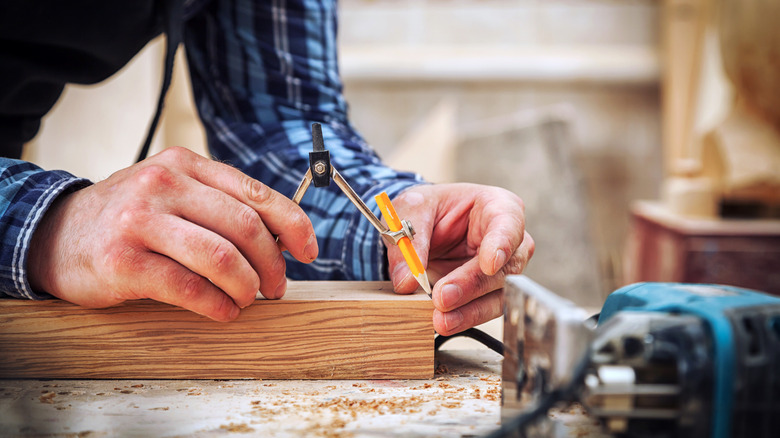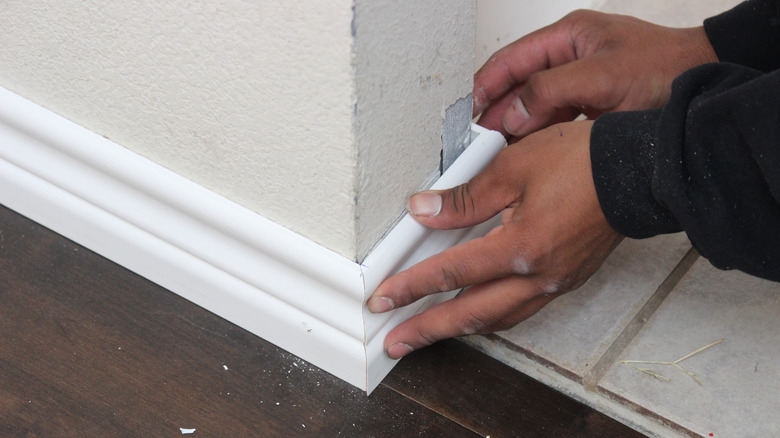The Best Hack For Fitting Wood In Awkward Spaces
We may receive a commission on purchases made from links.
Dealing with curved or jagged surfaces can be one of the most aggravating aspects of woodworking. Unlike some other woodworking techniques, the hardest part of trying to fit wood in awkward places is not usually cutting it — it's measuring it. If you are trying to install a straight piece of wood on an uneven surface, it can be very difficult to figure out how much wood to cut away for a perfect, tight fit. Thankfully, there's a simple method woodworkers use to solve such a problem. All you need is a drafting compass like the ScribeTec Compass Tool (one of many woodworking tools worth investing in), and you can trace along any wall, corner, or other awkward spot so you can see exactly where to cut the wood.
This technique, also known as scribing, is probably the easiest way to precisely cut wood to fit spaces that aren't perfectly square. In some cases, you can scribe even without a drafting compass. Say you're trying to put up a wooden shelf so that it's flush against a bumpy wall. If you're able to temporarily secure the shelf to the space you want to install it, you can then trace the profile of the wonky surface onto the shelf by holding a pencil vertically against the wall and gliding it along horizontally. In other words, you can oftentimes use uneven surfaces as a guide to outline what parts of a plank of wood need to be cut away.
Scribing makes woodworking simple
Depending on how warped the surface you're working on is, the gaps between it and the wood you're working with might be so big the pencil tip falls through. This issue can be easily fixed with a small chunk of wood: Use the wood as a spacer between the pencil and the wall, and you should still be able to trace the wall's profile.
When faced with an especially jagged surface, or when handling a precious piece of wood, you may want to use a thick piece of cardboard or posterboard as a template instead. That way, you can ensure the final product will fit flush before making any irreversible cuts. Taking time to check that all of your measurements are correct before you start sawing can help keep your DIY woodworking projects from looking cheap.
Once you're ready to start shaping a piece of wood to fit a specifically shaped surface, consider using a mix of power and hand tools. For example, you can cut away large sections of unnecessary wood using a jigsaw, then finish up with a chisel and hand plane to create precise edges. No matter what type of tools you use, be sure to brush up on the safety tips for beginner woodworkers, and then enjoy a smoother cut.

